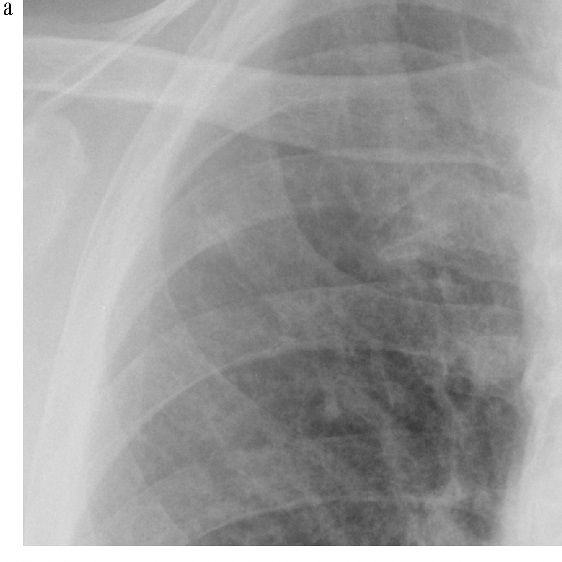Viewing Radiographs as ‘Bones Black’ Helped Detect Lung Nodules
Inverting radiographs from having the bones viewed as white to having them view as black may help radiologists detect abnormalities.
A: An ill- defined peripheral nodule in the second right anterior intercostal space in positive mode, via European Journal of Radiology

B: Inverse mode, via European Journal of Radiology

Inverting radiographs from having the bones viewed as white to having them view as black may help radiologists detect abnormalities.
In a recent study published in the European Journal of Radiology, viewing radiographs in inverse - with the bones black instead of white - helped radiologists identify more small lung nodules. This finding caused the researchers, led by Johannes Kirchner, MD, of Allgemeines Krankenhaus, Germany, to posit whether using an inverse imaging technique would effect “other tasks performed during chest radiography.”
Although studies of inverted radiographs have been conducted in the past, there are currently no conclusive results. Kirchner and colleagues conducted this study to see if inverting the image would help radiologists to detect more subtle pulmonary nodules.
To test the theory, five radiologists of varying experience were asked to independently review the digital radiographs of 55 patients presented either in standard mode or inverse mode. The majority of patients had presented with a single non-calcified peripheral nodule ranging in size from 6 mm to 12 mm. The remaining patients had normal findings (n=8). All findings had been confirmed by chest CT.
Viewing in standard mode had a sensitivity of 61.7 percent and a specificity of 72.5 percent for detecting small nodules. In contrast, when presented in inverse mode, the method had a sensitivity of 68.1 percent and a specificity of 75 percent. Using a ROC analysis performed using a computer algorithm, results showed a significant difference in favor of viewing the radiographs in inverse mode vs. standard mode (Az- value 0.810 vs. 0.694; P=.001).
“The results of our study demonstrate a signiï¬cant advantage of the inverse mode in the detection of small pulmonary nodules compared with the commonly used negative mode,” the researchers wrote. “This is due to the clear beneï¬t of the inverse mode seen in more experienced readers.”
When the researchers classified the results according to the experience of radiologists, they found that there was a significant difference between the two groups of readers when using inverse mode, favoring more experienced radiologists (ROC Az- values 0.716 vs. 0.909; P<.001).
“A possible explanation for this observation could be that the board-certiï¬ed radiologists of group A (experience of >20 years and >15 years) were more familiar with chest ï¬uoroscopy in which pulmonary nodules are presented as dark opacities,” the researchers wrote. “Apart from this, up to the early 1980s chest images were commonly published in the ‘bones black’ mode.”
The researchers acknowledged several imitations of their study including the small sample size and the small number of control cases.
However, the researchers still concluded that “chest radiography remains the most-widely used imaging technique in clinical practice for the detection of lung disease and its diagnostic power in detection of pulmonary nodules may be improved simply by inverting the grey-scale routinely.”